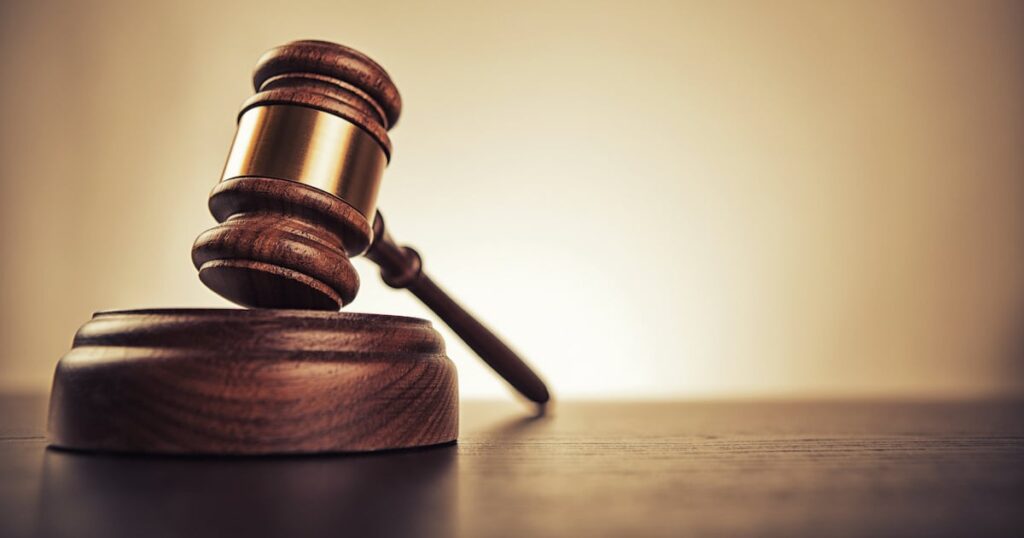[ad_1]

The legal battle over the potential TikTok ban took a critical turn as counsel for President-Elect Donald Trump and other petitioners filed a flurry of updated motions and amicus curiae (“friend of the court”) briefs with the U.S. Supreme Court over the past two weeks. With oral arguments scheduled for Jan. 10, 2025, the case now includes challenges to the very jurisdiction of the courts to decide the matter.
Latest developments in legal proceedings
A Dec. 31 motion by the Forum for Constitutional Rights (FCR), acting as amicus curiae, raises significant jurisdictional questions regarding the Protecting Americans from Foreign Adversary Controlled Applications Act. The Act grants exclusive review to the U.S. Court of Appeals for the DC Circuit, bypassing traditional pathways to Supreme Court review.
In the motion, FCR argued that this structure violates Article III of the Constitution, which establishes the Supreme Court as the ultimate arbiter of federal law.
The FCR filing highlights three key concerns:
- The DC Circuit’s exclusive authority under the Act undermines the Supreme Court’s constitutional role.
- A provision allowing the Executive Branch to reapply invalidated sections of the Act contradicts the separation of powers.
- The Act’s abstract review structure potentially violates the requirement for concrete “cases” or “controversies” under Article III.
Adding to these jurisdictional concerns, D. John Sauer, counsel of record for President Donald Trump, stated in an amicus brief filed on Dec. 27 that “three features of the Act raise concerns about possible legislative encroachment on prerogatives of the Executive Branch under Article II.” He highlighted that the Act’s structure “dictates that the President must make a particular national-security determination as to TikTok alone,” while granting broader discretion to the Executive Branch for other social-media platforms.
Sauer also noted that the timing of the divestment deadline—one day before the incoming Administration takes power—“raises significant concerns about possible legislative encroachment upon the President’s prerogative to manage the Nation’s geopolitical, strategic relationships overall.”
Potential impact on the case
These arguments add a new dimension to the high-stakes litigation. TikTok and other petitioners have primarily focused on the ban’s First Amendment implications, arguing that the law unjustly targets a speech platform used by millions of Americans.
However, the jurisdictional challenges could lead to the invalidation of the entire Act before substantive constitutional questions are addressed. Sauer argued that the Act’s implications on free speech are “sweeping and troubling,” stating that it could “set a dangerous global precedent by exercising the extraordinary power to shut down an entire social-media platform based, in large part, on concerns about disfavored speech on that platform.”
Sauer also pointed to historical examples of government overreach, asserting that “the history of the past several years, and beyond, includes troubling, well-documented abuses by such federal officials in seeking the social-media censorship of ordinary Americans.”
He urged the Court to delay enforcing the Jan. 19 deadline for TikTok’s divestment, emphasizing that this would “provide breathing space for the Court to consider the questions on a more measured schedule.” Such a stay, he argued, would allow “President Trump’s incoming Administration an opportunity to pursue a negotiated resolution of the conflict.”
What’s next?
The Jan. 19 deadline for the Act’s enforcement looms large. If implemented, TikTok would be banned across the United States unless ByteDance divests its American operations in a manner approved by the federal government—a move TikTok’s legal team called “economically and technologically infeasible,” in a court filing last month.
As TikTok’s legal counsel noted in the same filing, the platform’s closure would disrupt the digital landscape for its 170 million U.S. users, including businesses, creators and political campaigns.
The Supreme Court is expected to address the merits and procedural objections during its Jan. 10 session. The decision could set a precedent for the limits of federal power in regulating digital platforms and the judiciary’s role in adjudicating such disputes.
Sauer underscored the gravity of the Court’s upcoming decision, emphasizing that the Act’s potential flaws should not be rushed. Citing precedent, he argued that this Court “has aptly cautioned against deciding ‘unprecedented’ and ‘very significant constitutional questions’ on a ‘highly expedited basis.’” A stay, he suggested, would allow for “more breathing space to address these issues.”
Possible implications for U.S. industry
The Supreme Court’s Jan. 10 session could also establish critical precedents for U.S. businesses. For manufacturers and suppliers, the ruling may have far-reaching implications for digital marketing, consumer engagement and supply chain operations that increasingly rely on platforms like TikTok.
A decision favoring the government could signal a stricter regulatory environment for foreign-owned digital platforms, potentially influencing how businesses approach social media strategies and data compliance. Conversely, a ruling that limits federal authority may reinforce protections for digital tools that many businesses use to reach global audiences and streamline operations.
The case highlights a pivotal moment for tech regulation, with implications extending beyond TikTok to the broader landscape of U.S. commerce and innovation. Businesses across industries will be watching closely as the Court’s decision could shape the future of digital connectivity and marketing channels in the B2B sector.
[ad_2]
Source link

